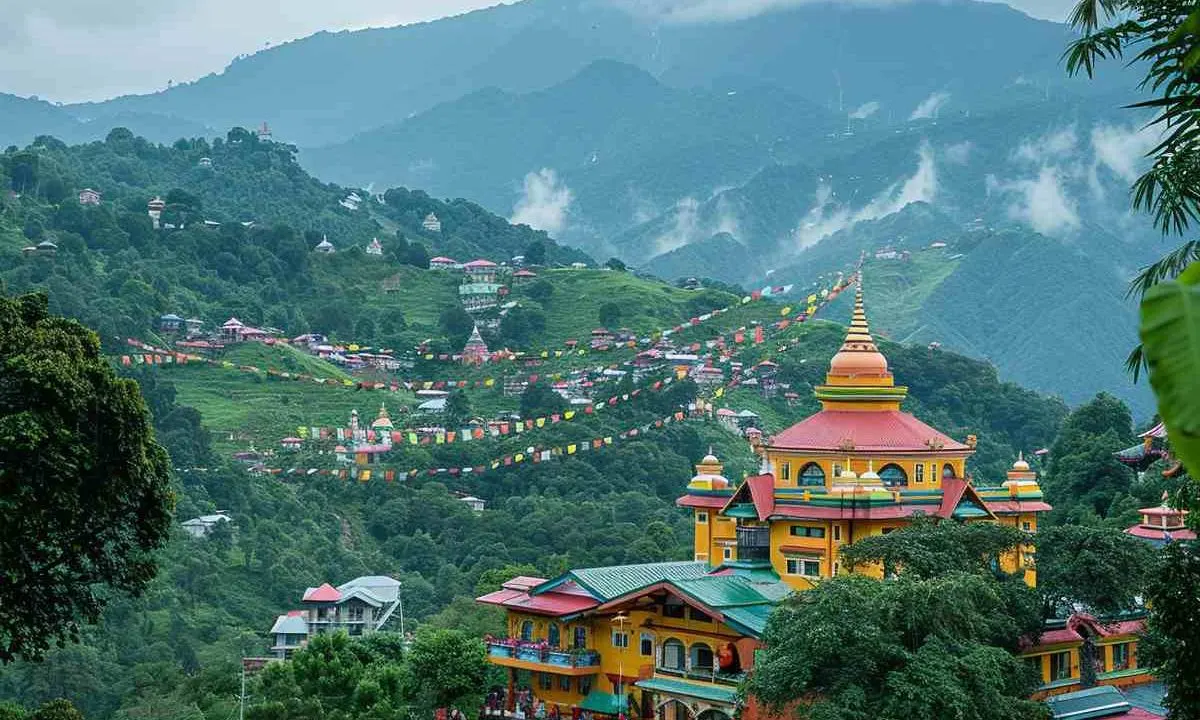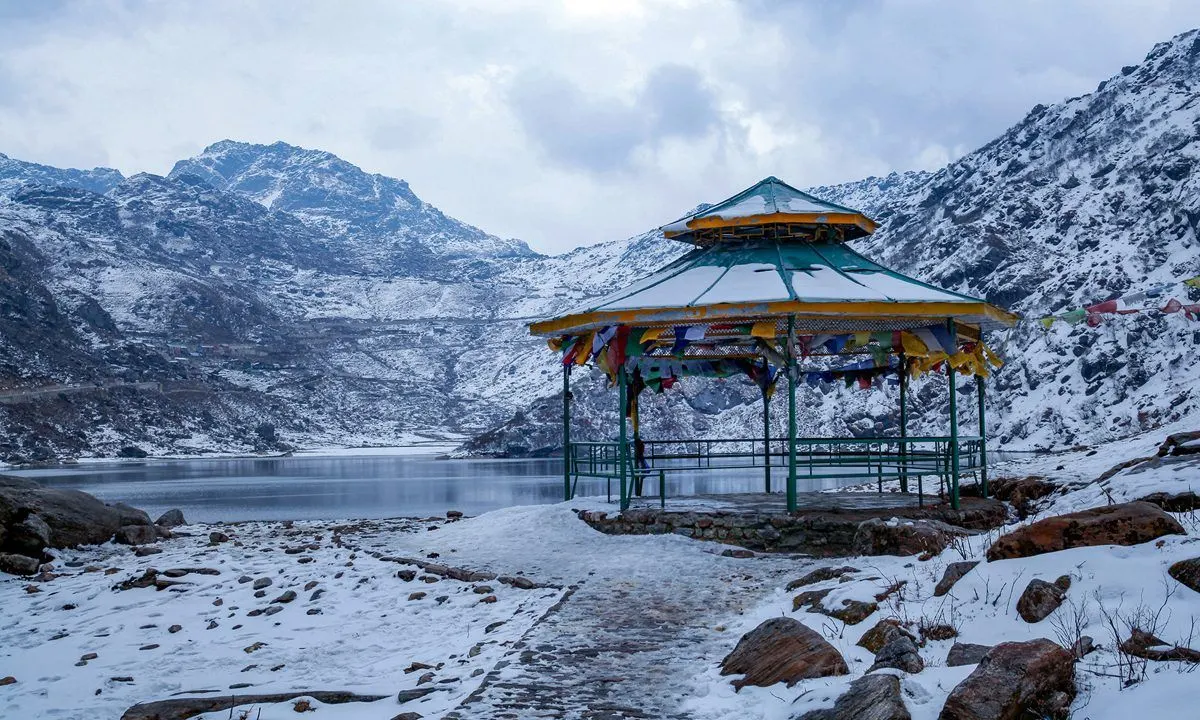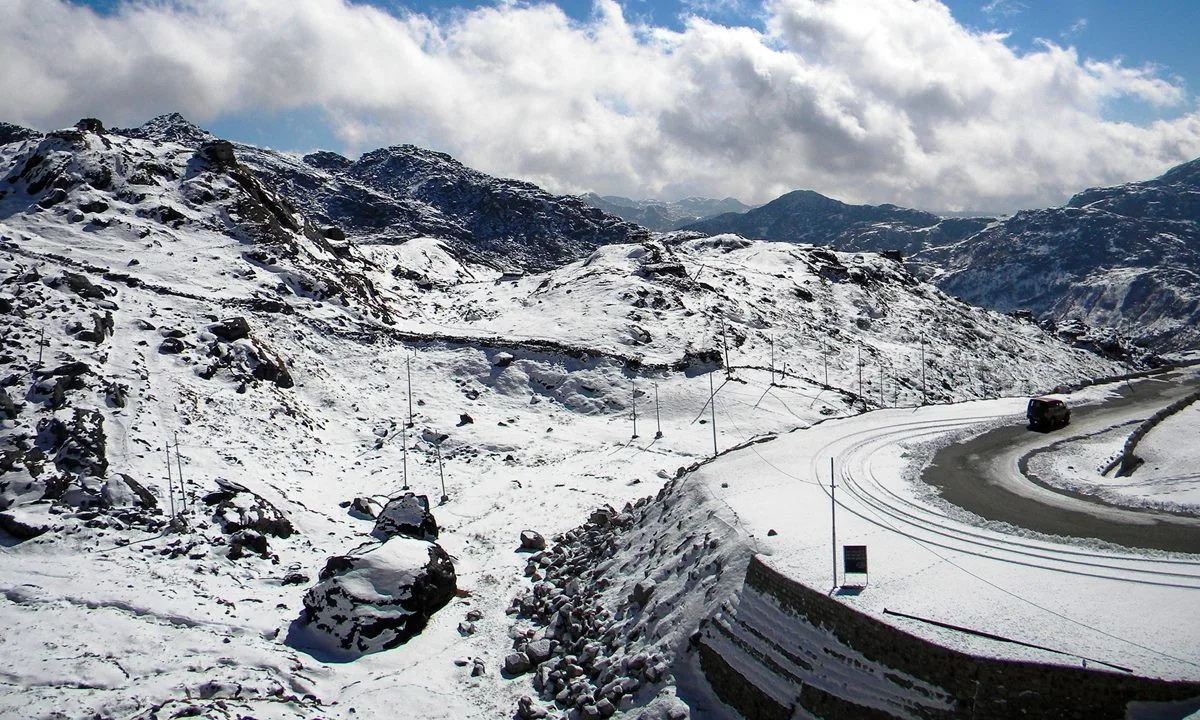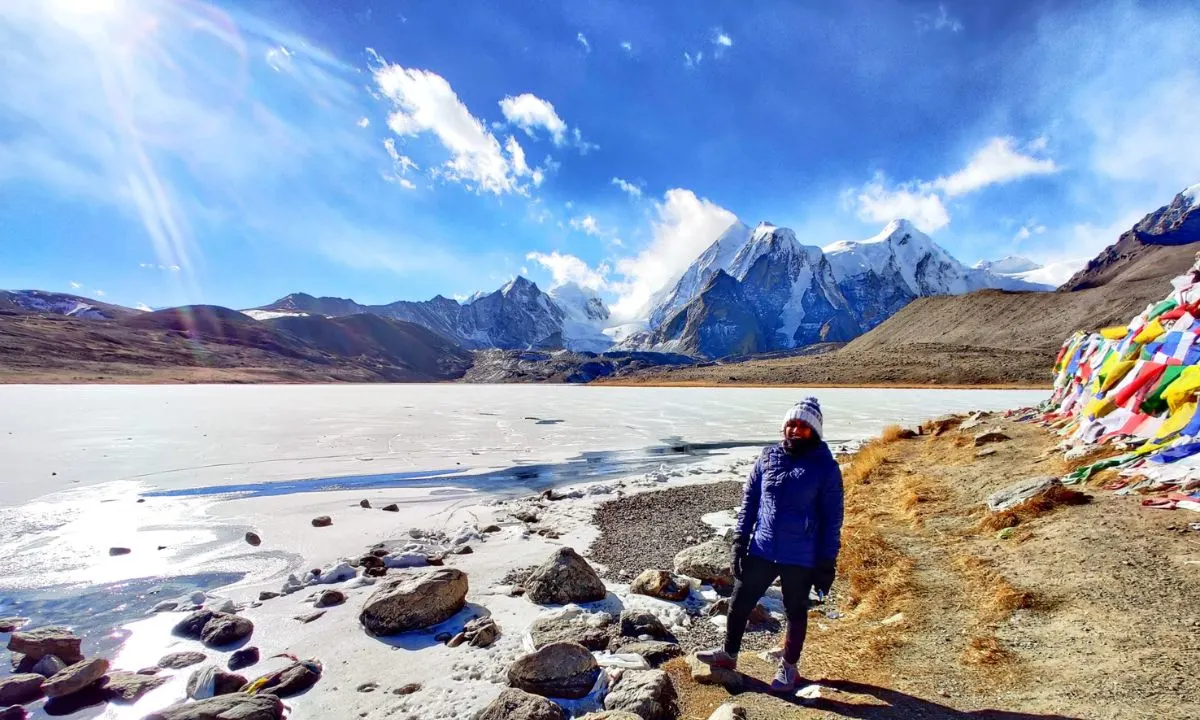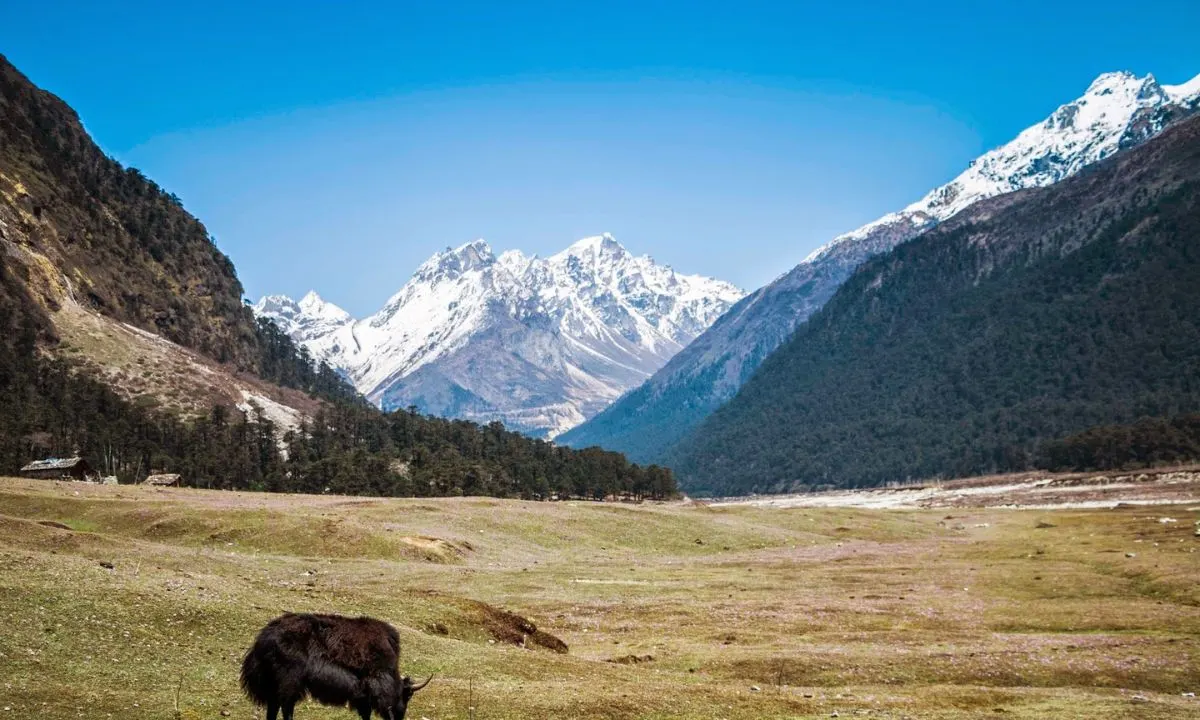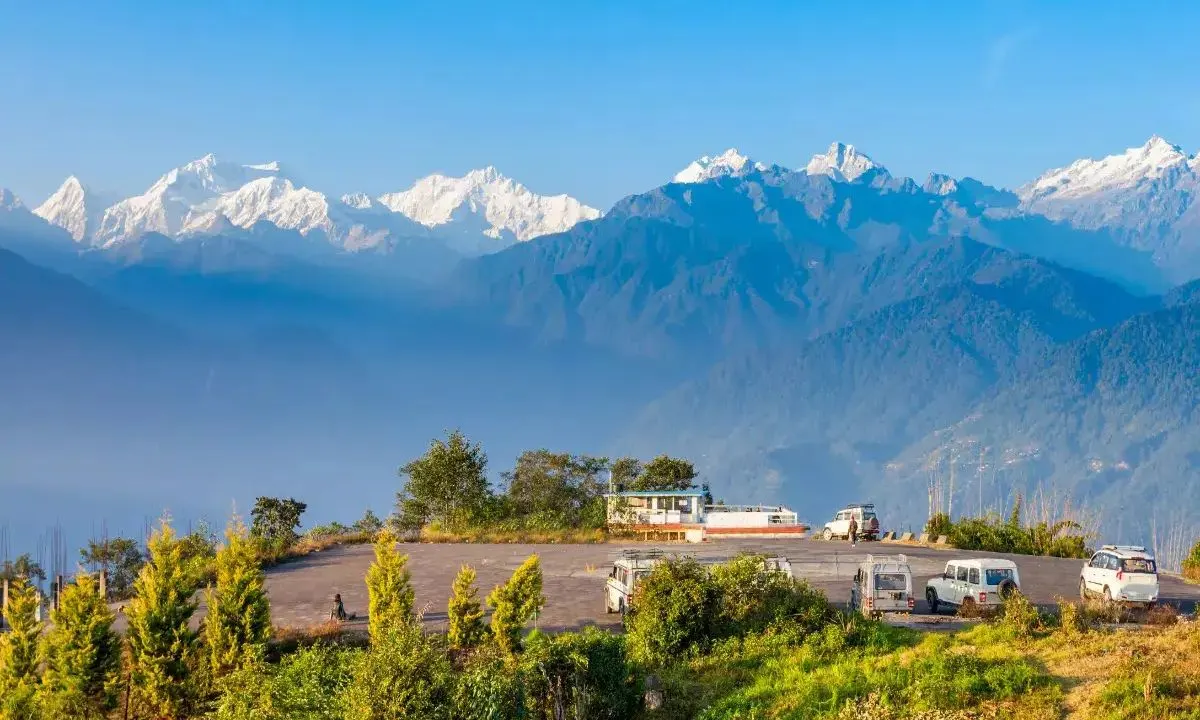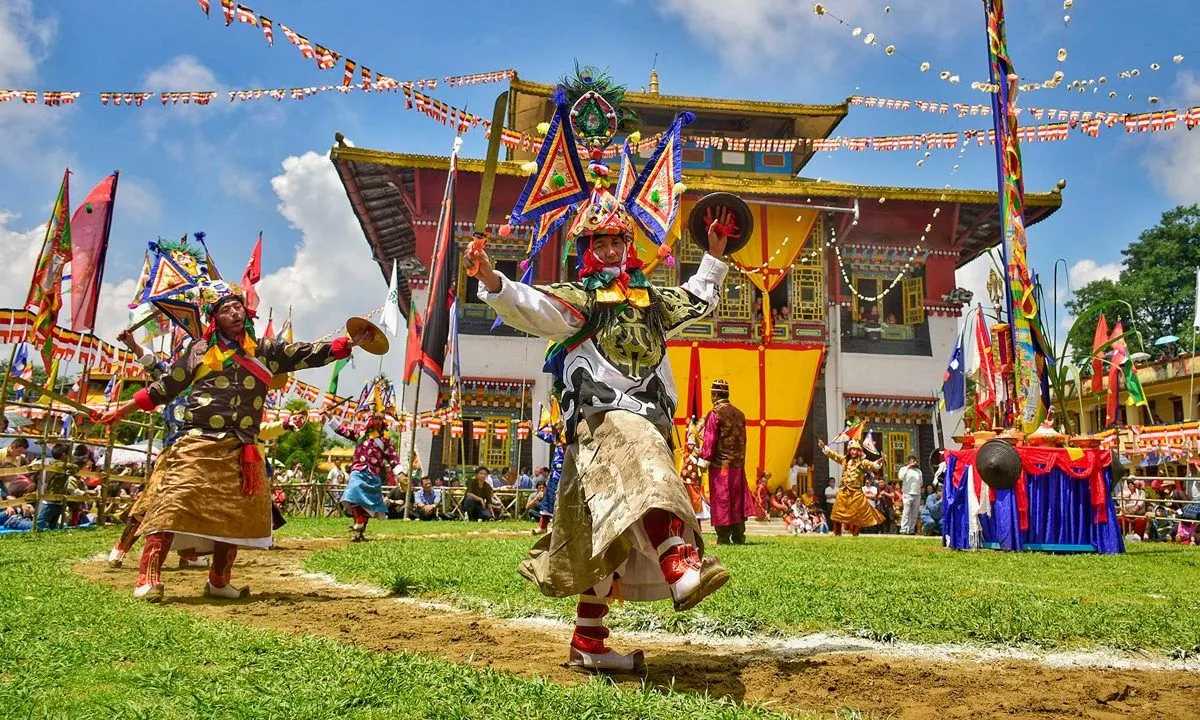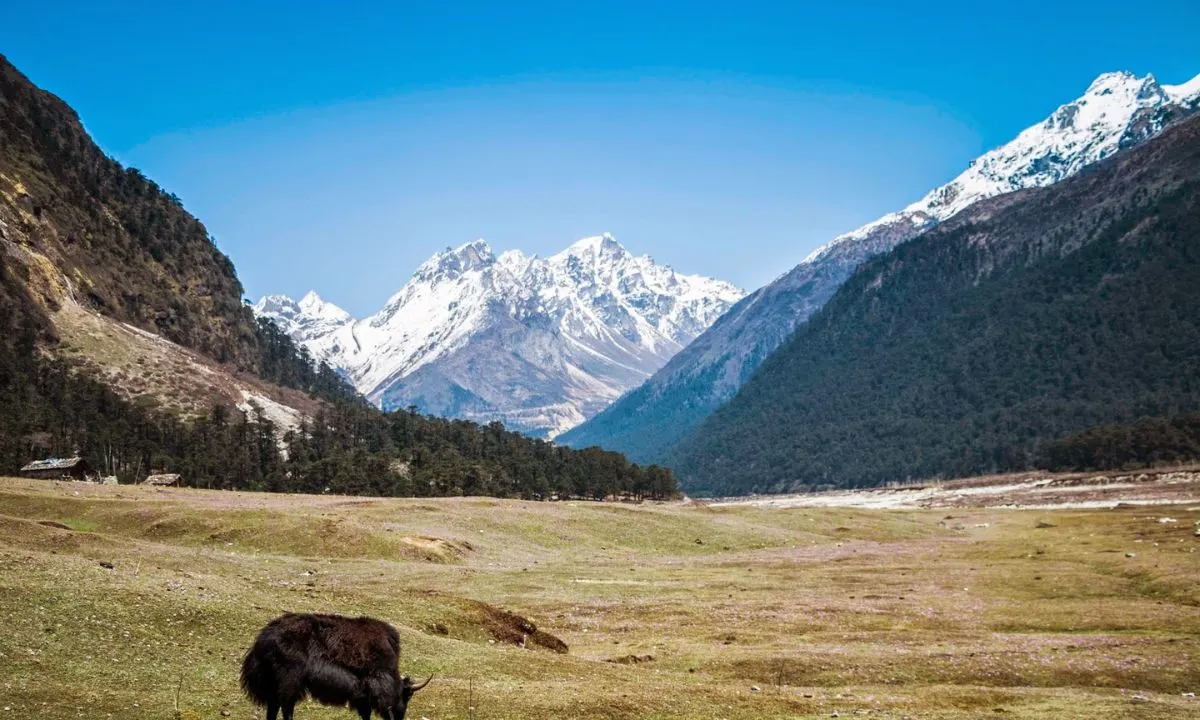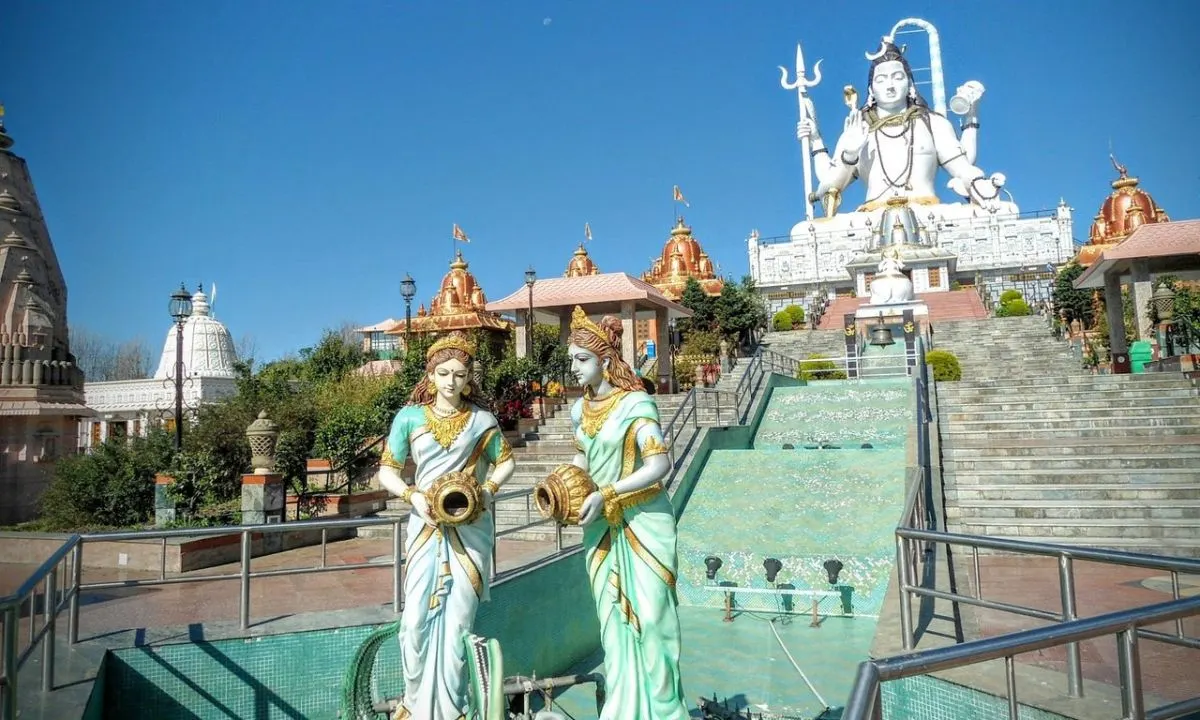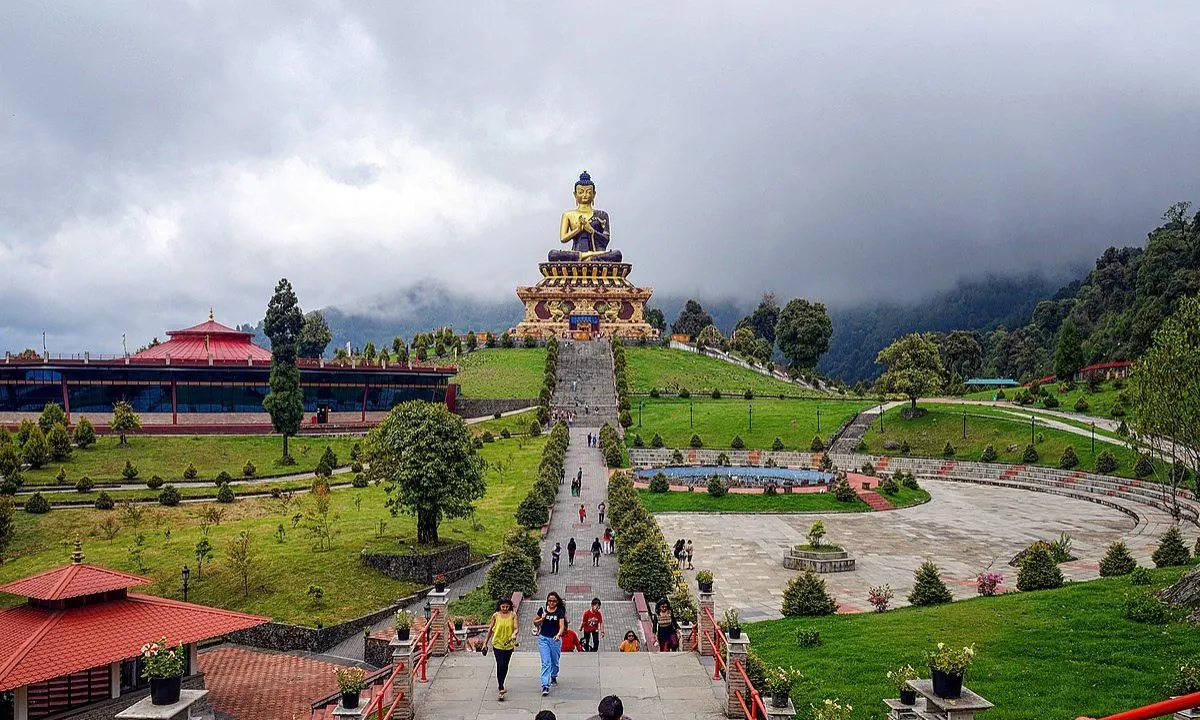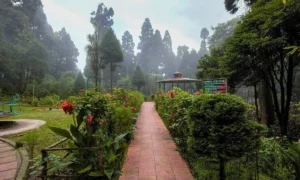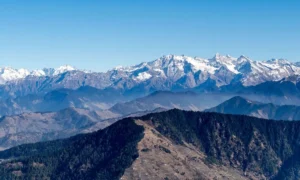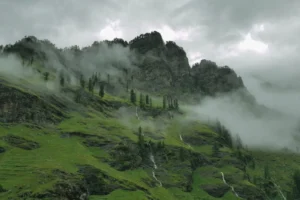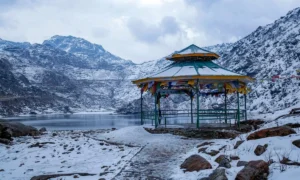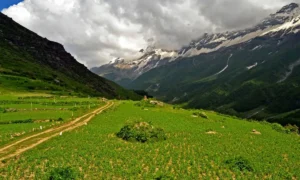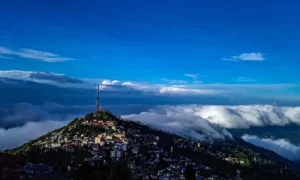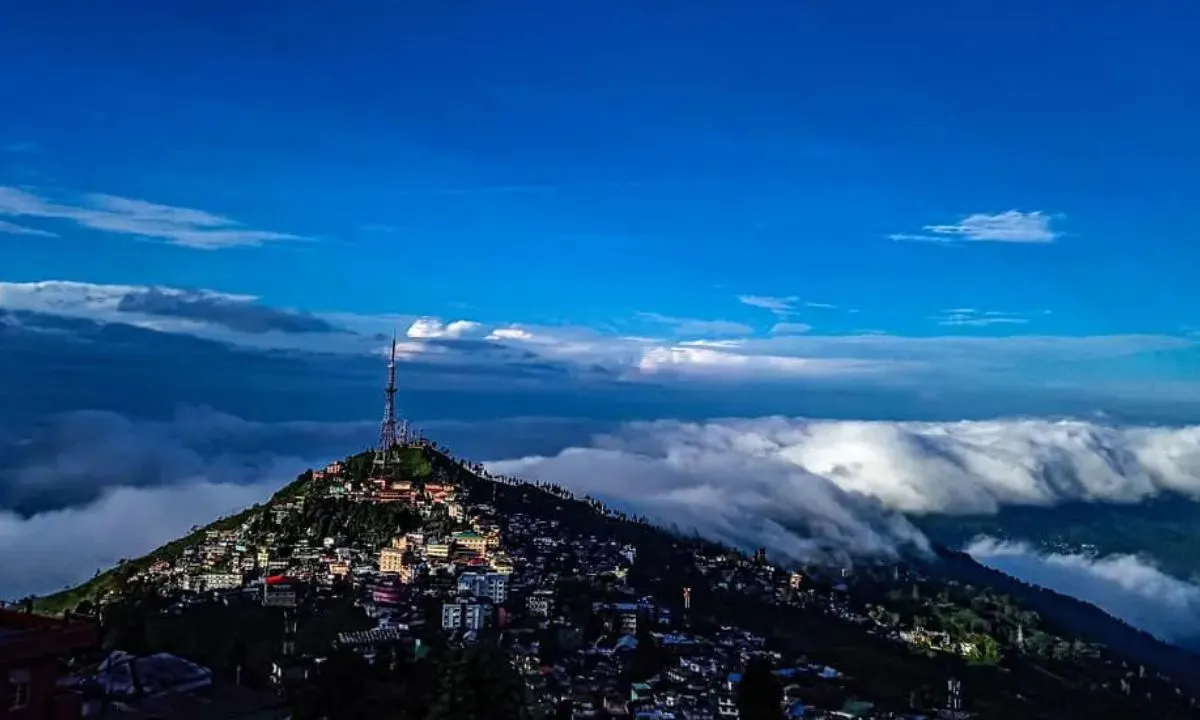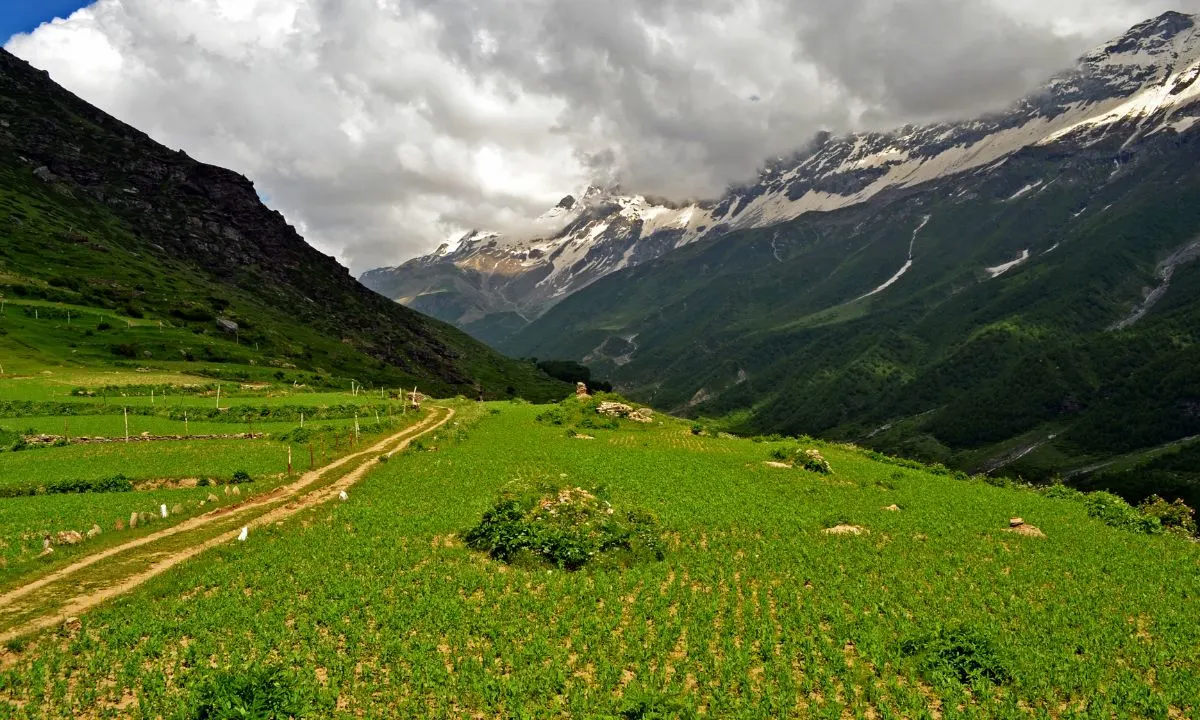Have you ever dreamed of a place where majestic mountains touch the clouds and serene lakes reflect the sky? Perhaps you are curious about what makes Sikkim a must-visit destination. Maybe you have heard about its beautiful monasteries or its stunning landscapes and are wondering where to begin your journey. It is completely normal to have these questions when planning a trip to a new, exciting place. Planning a vacation can feel overwhelming, but it does not have to be that way.
This article is your friendly guide to the most incredible Sikkim tourist places, designed to help you plan an unforgettable trip. We will explore the different regions of this beautiful state, from the bustling capital of Gangtok to the peaceful valleys of North Sikkim. Our goal is to provide you with valuable, actionable information about the best places to visit in Sikkim, helping you discover a hidden gem for your next adventure. You will learn about popular attractions, hidden spots, and useful travel tips, making you feel confident and excited about your journey. Get ready to uncover the secrets of Sikkim!
Exploring the Diverse Regions of Sikkim
Sikkim is a small state, but it is packed with a variety of breathtaking landscapes and cultural experiences. To make your travel planning easier, we can divide the state into four main regions: East, West, North, and South Sikkim. Each area offers a unique flavor and its own set of Sikkim tourist attractions.
East Sikkim: The Heart of the State
East Sikkim is home to the state capital, Gangtok. This vibrant city is the perfect starting point for any Sikkim tour. It is a hub of culture, spirituality, and incredible views.
- Gangtok: The capital city is a beautiful blend of traditional culture and modern life. Stroll along MG Marg, a clean and litter-free promenade, where you can enjoy local food and shop for souvenirs. The city also has several significant sites like the Namgyal Institute of Tibetology, which houses a remarkable collection of Tibetan artifacts and manuscripts.
- Tsomgo Lake: Located about 40 kilometers from Gangtok, this stunning glacial lake is a must-visit. The name “Tsomgo” means “source of the lake” in the local Bhutia language. Surrounded by snow-capped mountains, its waters change color with the seasons. In winter, the lake freezes completely, creating a magical wonderland. Visitors can enjoy yak rides and hot tea here.
- Nathula Pass: A high-altitude mountain pass on the Indo-China border, Nathula Pass is one of the most famous places to see in Sikkim. It was once part of the ancient Silk Route. To visit, you must obtain a special permit, which your tour operator can arrange. The pass offers a sense of history and patriotism, with clear views of the border and the surrounding mountains. It is important to note that the high altitude requires some caution, and a doctor should be consulted if you have any health concerns.
North Sikkim: A Land of Pristine Beauty
North Sikkim is a remote and beautiful region known for its raw, untouched natural beauty. It requires special permits for entry, but the effort is well worth it. The landscapes here are unlike anywhere else.
- Lachung and Lachen: These two charming villages serve as gateways to some of North Sikkim’s most popular attractions. They offer a glimpse into the traditional lifestyle of the local communities. The journey to these villages is an adventure in itself, with scenic drives through lush valleys and along roaring rivers.
- Yumthang Valley: Often called the “Valley of Flowers,” Yumthang is a nature lover’s paradise. In the spring, the valley explodes with a riot of colors from blooming rhododendrons, primulas, and other alpine flowers. It is a stunning sight to behold.
- Gurudongmar Lake: One of the highest lakes in the world, Gurudongmar Lake is a sacred site for Buddhists and Sikhs. Located at an altitude of over 17,000 feet, the views are absolutely breathtaking. The crystal-clear, icy water and the backdrop of snow-covered peaks create a serene and spiritual atmosphere. Visitors are advised to take precautions against altitude sickness.
West Sikkim: Home to History and Spirituality
West Sikkim is known for its rich history, ancient monasteries, and incredible trekking trails. It is a great place for those who seek tranquility and a deeper connection with the region’s spiritual heritage.
- Pelling: As the second most popular tourist destination in Sikkim, Pelling offers some of the most spectacular panoramic views of the Kanchenjunga range. The town is a base for many treks and sightseeing activities.
- Pemayangtse Monastery: This is one of the oldest and most significant monasteries in Sikkim, belonging to the Nyingma order of Tibetan Buddhism. The intricate architecture and peaceful ambiance make it a perfect spot for spiritual reflection.
- Yuksom: This village holds great historical importance as it was the first capital of Sikkim. It is the starting point for the famous Goechala Trek, a trek that takes you to the base of Mount Kanchenjunga. The serene environment and historical ruins like the Dubdi Monastery make Yuksom a special place.
South Sikkim: A Blend of Nature and Pilgrimage
South Sikkim is famous for its cultural and religious sites. It is a more relaxed and less crowded region compared to the north or east.
- Namchi: This town is a major pilgrimage center. The Char Dham complex, a replica of the four Hindu pilgrimage sites, and the towering statue of Guru Padmasambhava at Samdruptse are major attractions.
- Ravangla: A peaceful town offering stunning views of the surrounding mountains, including Mount Kanchenjunga. The Buddha Park, with its massive statue of the Buddha, is a serene and beautiful place to visit. It is a great location for nature walks and birdwatching.
Sikkim Tourist Attractions for Families
Sikkim is a fantastic destination for families, offering a mix of adventure, culture, and nature that kids and adults will love.
- Gangtok Ropeway: A cable car ride over the city of Gangtok provides panoramic views that will thrill everyone.
- Tsomgo Lake: Located at a high altitude, this glacial lake is a popular spot for yak rides. The experience of riding these gentle giants with a backdrop of snow-capped mountains is unforgettable for children.
- Himalayan Zoological Park: This is a great place to see rare animals like the red panda, snow leopard, and Himalayan black bear in their natural habitat.
- M.G. Marg: The main street in Gangtok is a pedestrian-only zone with shops, cafes, and a lively atmosphere. It’s a safe and fun place for a family stroll.
- Flower Exhibition Centre: Located in Gangtok, this vibrant center showcases a variety of local flowers, including orchids and rhododendrons, and is a visual treat for all ages.
How to Plan a Sikkim Trip
Planning a trip to Sikkim requires careful consideration, especially regarding travel permits and itineraries.
- Choose Your Itinerary: A typical trip to Sikkim lasts 7 to 10 days to cover the main highlights of the East, North, and West regions.
- Best Time to Visit: The best time to visit is from March to June (spring) and September to November (autumn). These months offer pleasant weather and clear skies.
- Getting There: The nearest airport is Bagdogra (IXB) in West Bengal, and the nearest railway station is New Jalpaiguri (NJP). From either of these, you can hire a taxi or take a shared cab to Gangtok, which takes about 4-5 hours.
- Permits: Indian nationals need permits for certain protected areas like Nathula Pass, Tsomgo Lake, and most of North Sikkim. It’s best to arrange these through a local travel agent, as they handle the application process for you. For foreign tourists, an Inner Line Permit is also required.
- Accommodation: From luxury resorts to cozy homestays, Sikkim offers a wide range of accommodation options. Booking in advance is highly recommended, especially during peak season.
Sikkim Tour Packages for Couples
Sikkim is a fantastic destination for couples, offering romantic and serene experiences amidst nature. Many tour operators offer special honeymoon and romantic packages.
- Pelling: Known for its stunning panoramic views of the Kanchenjunga range, Pelling offers a tranquil and romantic setting. You can visit the ancient Pemayangtse Monastery or take a romantic walk to the Sangachoeling Monastery for a spectacular sunset.
- Yumthang Valley: Often called the “Valley of Flowers,” this picturesque valley is a paradise in spring when it is covered in blooming rhododendrons. It’s a perfect spot for couples to enjoy nature’s beauty and hot springs.
- Zuluk: For couples who want to get away from the crowds, Zuluk, a small village on the historic Old Silk Route, offers incredible views of the zigzag roads and the sunrise over the Kanchenjunga range. This is a very intimate and offbeat choice.
- Ravangla: This peaceful town is home to the stunning Buddha Park, which features a massive statue of the Buddha. The serene atmosphere and beautiful mountain views make it an ideal spot for couples seeking tranquility.
Best Time to Visit Sikkim
Sikkim has three main tourist seasons, each with its own charm.
Summer (March to June) in Sikkim
This is the most popular time to visit. The weather is pleasant, with mild temperatures ranging from 15°C to 25°C, which is ideal for sightseeing and outdoor activities. The skies are generally clear, providing fantastic views of the mountain ranges. This is also when the famous Yumthang Valley “Valley of Flowers” is in full bloom with rhododendrons and other alpine flowers.
Autumn (September to November) in Sikkim
Following the monsoon, the air becomes crisp and the skies are at their clearest. This season is perfect for those who want to witness the majestic Kanchenjunga range in all its glory. Temperatures are mild to chilly, making it great for trekking and enjoying local festivals like Tihar.
Winter (December to February) in Sikkim
If you dream of snow, winter is the best time for you. High-altitude areas like Tsomgo Lake and Nathula Pass are covered in a pristine layer of snow, creating a magical landscape. While temperatures can drop to sub-zero, the snow-covered scenery is breathtaking. However, be prepared for potential road closures due to heavy snowfall.
Monsoon (July to August) in Sikkim
The monsoon season brings heavy rainfall, which can lead to landslides and difficult road conditions. While the landscapes are lush and green with gushing waterfalls, this is generally considered the off-season for tourism. It is not recommended for first-time visitors or those planning extensive travel around the state.
Things to Do in Sikkim
Sikkim offers a wide range of activities for all types of travelers, from spiritual seekers to adventure enthusiasts.
For the Nature Lover and Sightseer
- Yak Ride at Tsomgo Lake: Experience a unique ride on a yak around the scenic glacial lake.
- Paragliding in Gangtok: Get a bird’s-eye view of the city and its surrounding valleys.
- Visit the Buddha Park in Ravangla: A serene park with a giant statue of Buddha, offering a peaceful and scenic experience.
- Explore Yumthang Valley: Walk through the “Valley of Flowers” and relax in the hot springs.
- Witness the Sunrise from Tashi Viewpoint: Watch the breathtaking sunrise over the Kanchenjunga and other Himalayan peaks.
For the Thrill Seeker
- River Rafting on the Teesta River: Experience the thrill of white-water rafting through challenging rapids.
- Trekking: Embark on a multi-day trek to Goechala or the Kanchenjunga Base Camp for an unforgettable Himalayan adventure.
- Mountain Biking: Explore the rugged terrains and scenic trails of Sikkim on a mountain bike.
- Bungee Jumping at Singshore Bridge: Leap from Sikkim’s highest bridge for an adrenaline-pumping experience.
For the Cultural Explorer
- Visit Monasteries: Sikkim is a spiritual hub. Visit the historic Pemayangtse Monastery in Pelling, the grand Rumtek Monastery near Gangtok, or the ancient Enchey Monastery.
- Stroll along M.G. Marg: The main pedestrian street in Gangtok is perfect for a leisurely walk, shopping for local crafts, and trying delicious Sikkimese food.
- Explore Namchi’s Char Dham: A large pilgrimage complex with replicas of the four Hindu pilgrimage sites.
Sikkim Travel Guide for First-Timers
Here are some essential tips for first-time visitors to ensure a smooth and enjoyable trip.
- Pack Smart: Temperatures can vary greatly. Pack layers, including warm jackets, woolens, and rain gear, regardless of the season. Also, bring comfortable walking shoes for sightseeing and trekking.
- Stay Hydrated: Due to the high altitude in many areas, it’s crucial to drink plenty of water to prevent altitude sickness.
- Respect Local Culture: Sikkim is a state with a rich Buddhist heritage. Be respectful when visiting monasteries and other religious sites. Ask for permission before taking photos of people.
- Travel with a Local Operator: For a hassle-free trip, especially if you plan to visit restricted areas, it’s best to book a package with a reliable local tour operator. They can arrange your permits, transportation, and accommodation.
- Enjoy the Local Cuisine: Don’t miss out on trying local delicacies like momos, thukpa, and traditional Sikkimese food. The flavors are unique and a highlight of the trip.
Frequently Asked Questions
1. What is the best time to visit Sikkim?
2. Are permits required to visit Sikkim?
3. How many days are sufficient for a trip to Sikkim?
4. What are some of the popular adventure activities in Sikkim?
Conclusion
Sikkim is a true paradise, offering a unique blend of adventure, spirituality, and natural beauty. From the bustling streets of Gangtok to the peaceful, high-altitude lakes of North Sikkim, there is something for every kind of traveler. We have explored the most significant Sikkim tourist places, providing a roadmap for your next vacation. Whether you are seeking a thrilling trek or a tranquil retreat, Sikkim will not disappoint.
Remember to plan your trip carefully, keeping in mind the permit requirements and the best seasons to visit. Share your own travel stories and questions in the comments below! We are always happy to hear about your experiences and help you with your travel plans.
